An Urban Gateway to Colorado's Wilderness
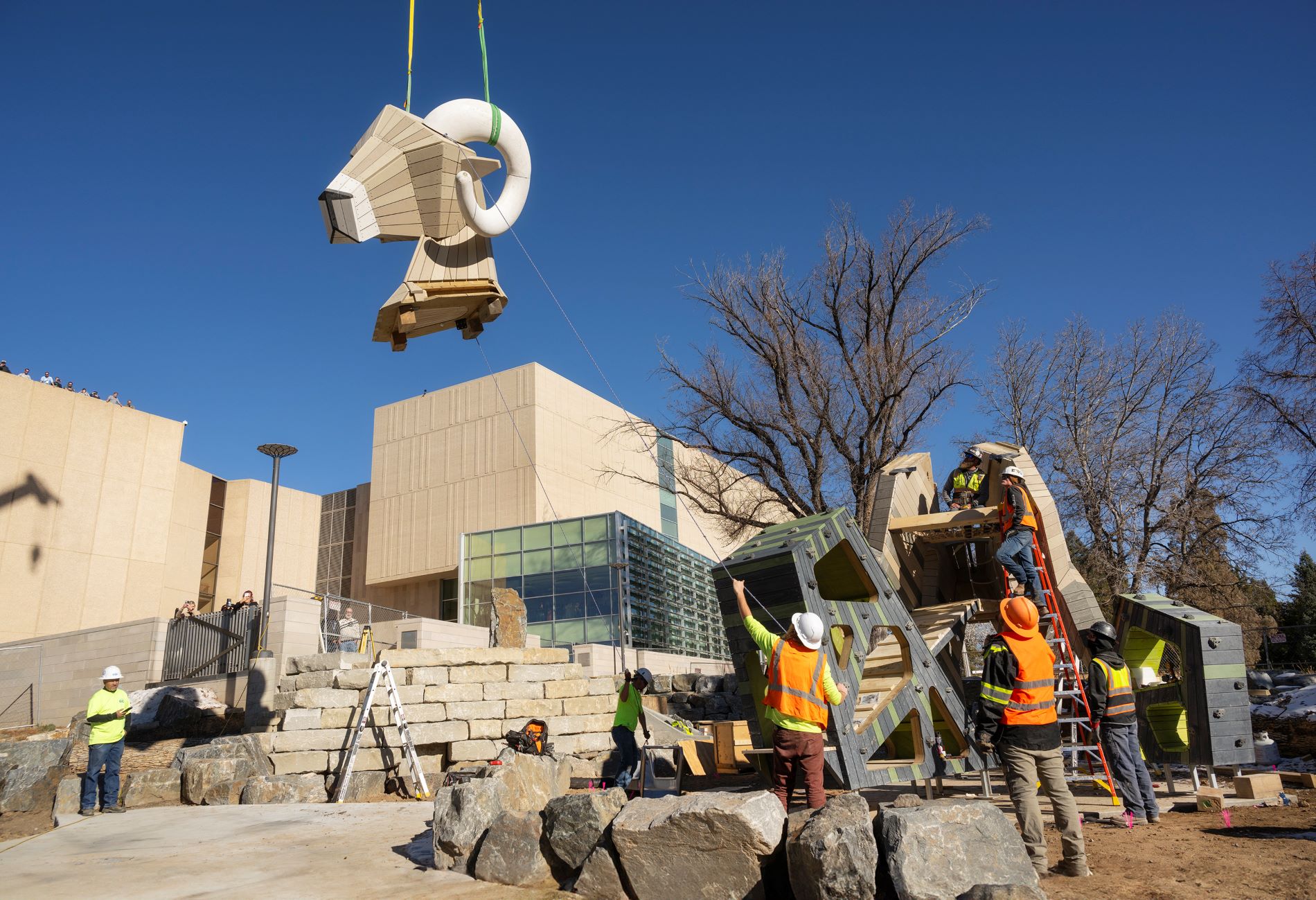
Nature provides peace and harmony. Play provides laughter and invites us to live in the moment. So, what could be better than enjoying a playful, peaceful moment at the Denver Museum of Nature & Science’s soon-to-open Nature Play installation, located just outside the Museum in City Park?
Denver Museum of Nature & Science, in partnership with Denver Parks & Recreation, has officially opened Nature Play, a four-acre interactive experience that aims to bridge Colorado’s unique ecosystems, play and the Museum into one unforgettable experience.
Nature Play restores a historic waterway, adds hundreds of plants and trees and creates a showcase for local artistry, accessible pathways and self-directed play. With opportunities for learning, respite and engagement for people of all ages and abilities, we hope you’re as excited for Nature Play as we are.
Here are SOME of the highlights:
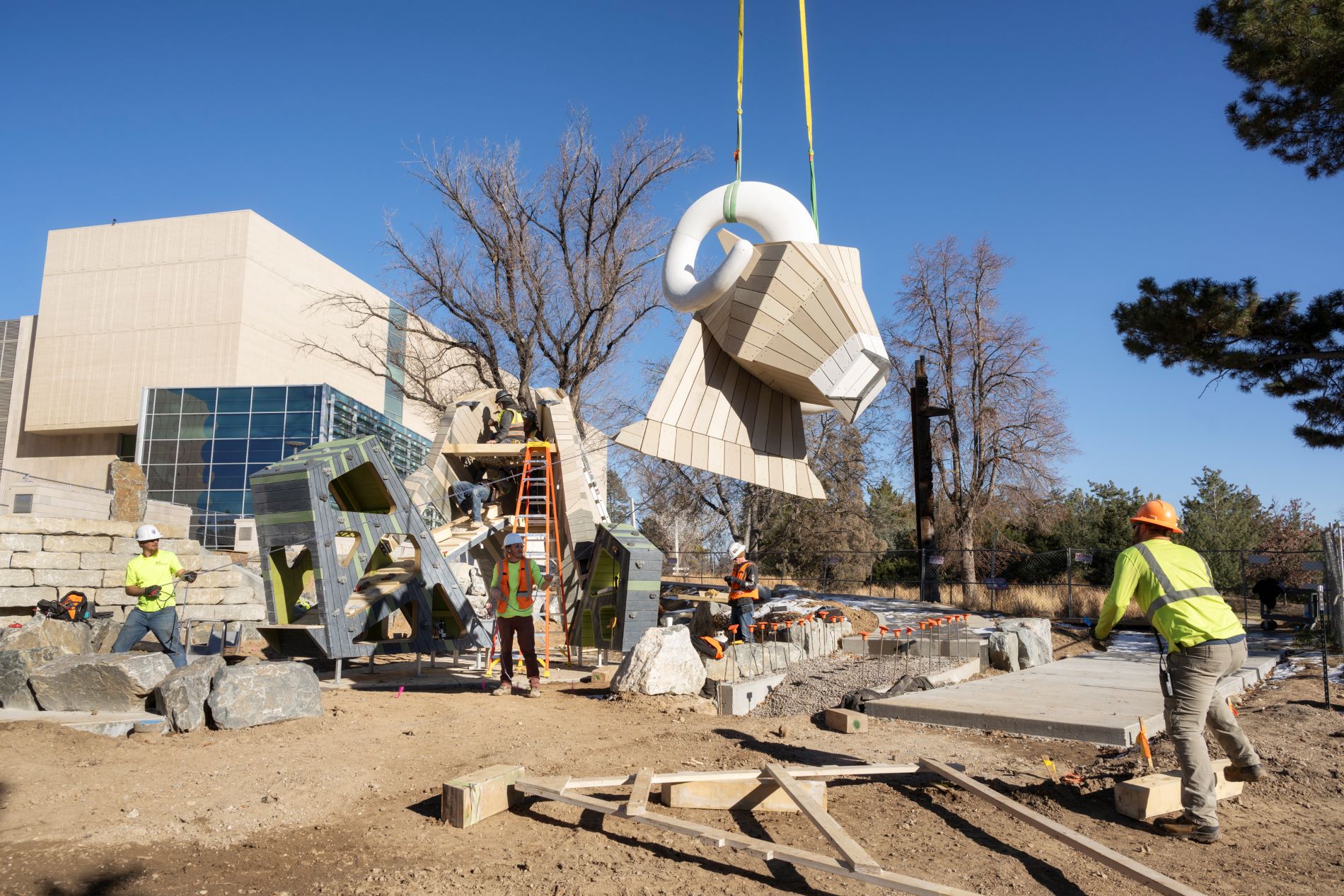
Construction of the 20-foot, climbable big horn sheep outside the Denver Museum of Nature & Science. (Photo/Rick Wicker)
At Nature Play, children and adults have the opportunity to play on a 20-foot Rocky Mountain bighorn sheep. The Rocky Mountain bighorn sheep is not only known for its big, curved horns, but also its remarkable agility and strength, particularly in navigating steep, rocky mountain terrains with ease. The mountain-dwelling mammal proudly stands as Colorado's state animal, symbolizing the rugged beauty and wild spirit of Colorado's mountains.
The bighorn sheep play structure was installed on Nov. 28, 2023. We’re sure that this iconic sculpture is not only set to become a landmark, but also a place for young and older generations alike to use and improve their strength and agility — all while having a RAM-bunctious good time!
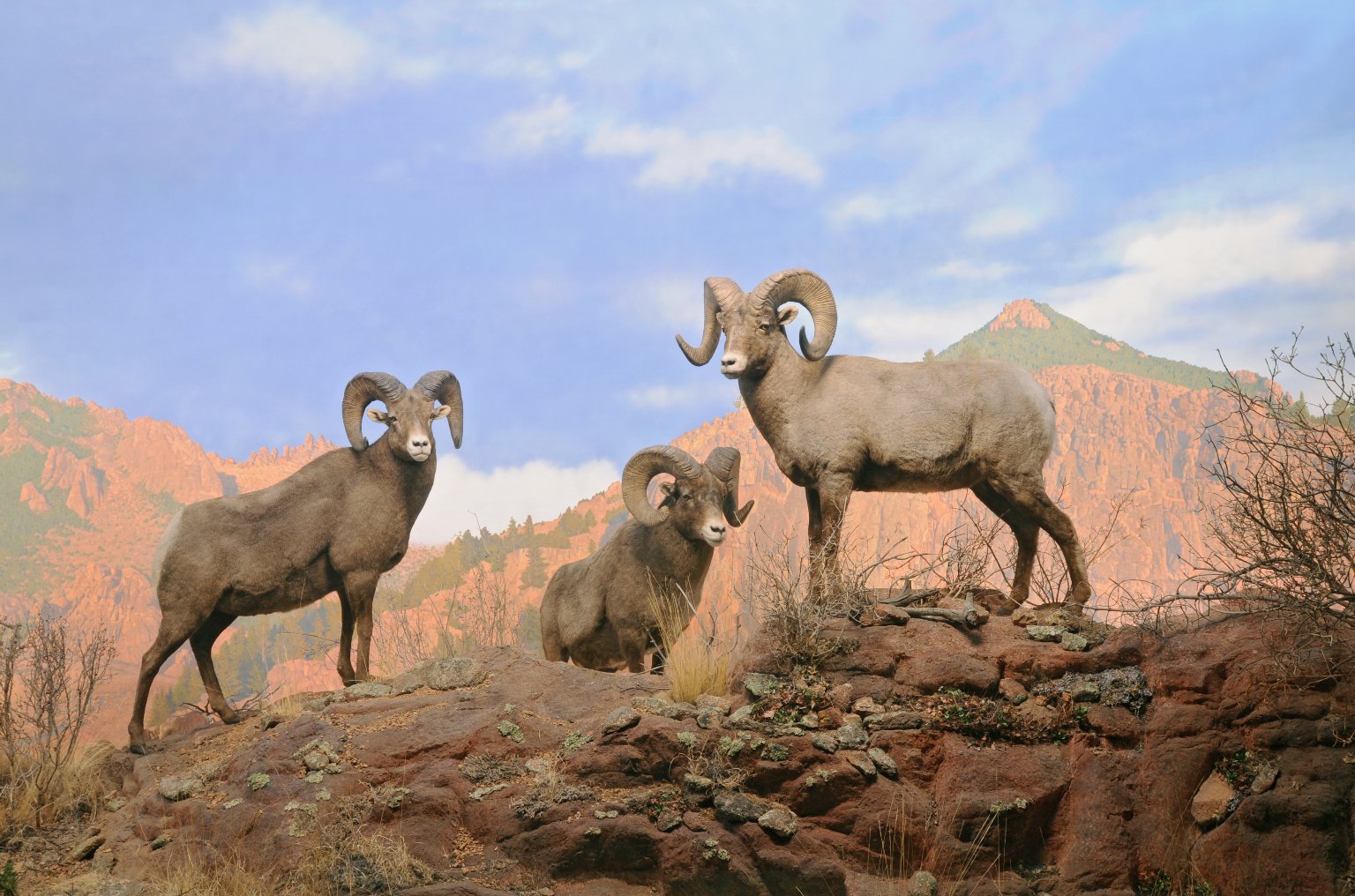
Diorama hall of Rocky Mountain Big Horn sheep located inside the Denver Museum of Nature & Science. (Credit/Rick Wicker)
The story of the Denver Museum of Nature & Science began in 1868, when Edwin Carter moved into a tiny cabin in Breckenridge, Colorado, to pursue his passion: the scientific study of the birds and mammals of the Rocky Mountains. Almost single handedly, Carter assembled one of the most complete collections of Colorado fauna then in existence. Taking the collections back to the Museum, and with the assistance of taxidermists and artists, workers painstakingly re-created the habitats using painted backgrounds, special lighting and carefully crafted reproductions of plants and flowers. Today, the Museum has 89 wildlife dioramas throughout its halls.
The dioramas located within the Explore Colorado gallery display flora and fauna that grace each of the eight ecosystems found throughout the state of Colorado making the Explore Colorado installation one that is near and dear to our Colorado hearts.
Using the Museum’s popular, third floor Explore Colorado dioramas as inspiration, Nature Play recreates the diverse ecosystems of Colorado, from alpine tundra to the prairies of the grasslands, all within the urban City Park.
Nature itself has helped shape the design of the project. Frank Krell, Denver Museum of Nature & Science curator of entomology, conducted baseline insect surveys of the area with Teen Science Scholars. They studied the baseline eco-health of the area before construction began in 2023, discovering a colony of native ground-nesting sweat bees within the space. Their discovery helped to re-shape the design of the space to protect the bees throughout the project’s construction.
"Since Nature Play will be landscaped with native Colorado plants, we are hoping that we will see a return of insect species that aren’t currently found in City Park right now," said Dr. John Demboski, senior vice president of Science at the Denver Museum of Nature & Science.
The native pollinators, with Nature Play now open, have intact and expanded habitat – now, isn’t that just the bee’s knees?
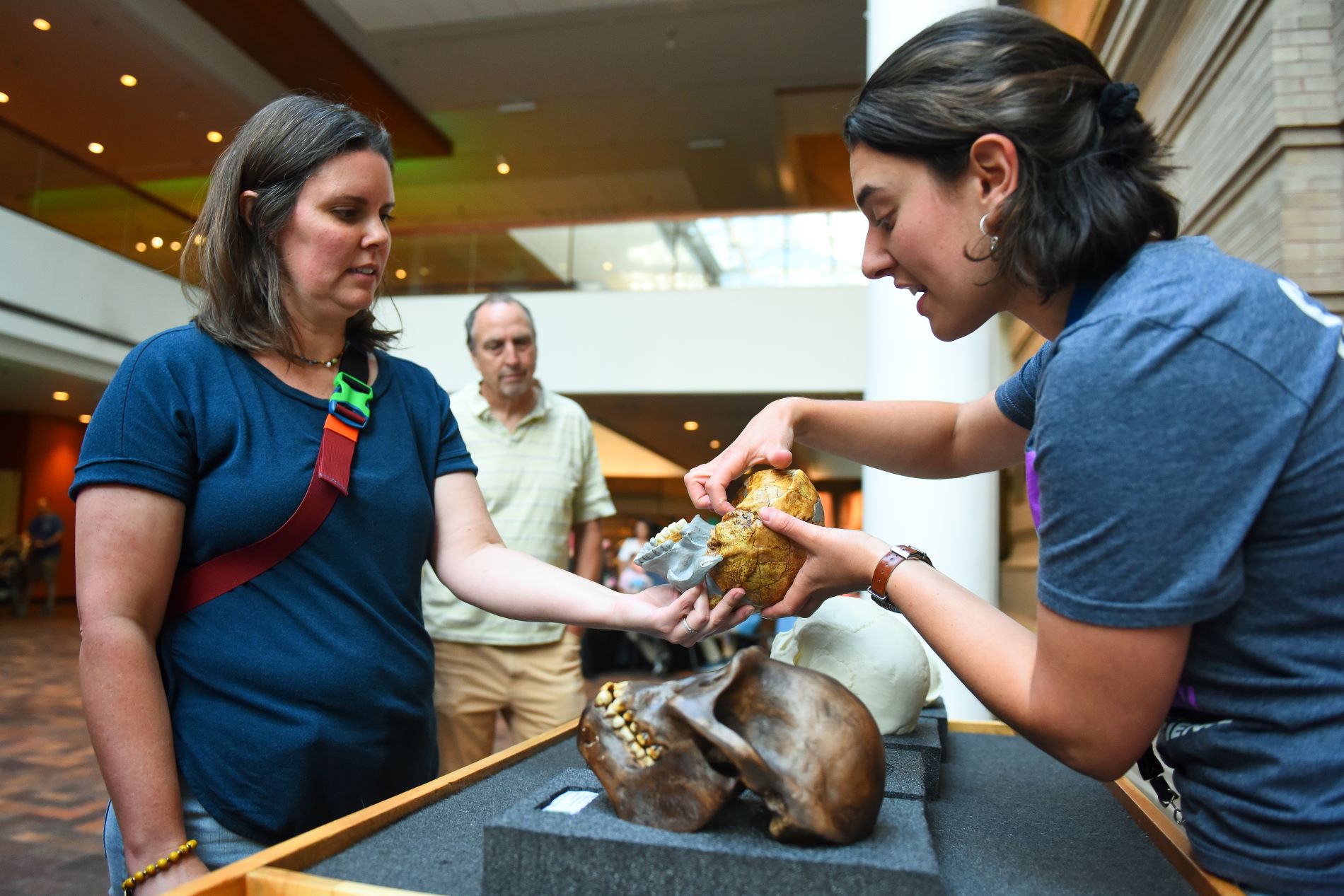
Museum Educator Jenna Chervin engaging with guests inside the Denver Museum of Nature & Science (Photo/Chris Schneider)
The involvement of the Denver community in shaping this project's direction stands out as a particularly important part of Nature Play's ongoing path to existence. In 2018, the Museum took part in an effort to gather insights and preferences from thousands of community members on how they wanted the park to come to life. Driven to closely mirror the community's dreams, we heard many of their key desires, ensuring we had native Colorado plants and flowers, enticing water features, accessibility and more.
The Museum also connected with a group we’re very familiar with serving: children. And guess what they said? They said they wanted slides! And not just one slide, they wanted A LOT of slides. The Museum listened, we’re proud to include three slides throughout the play installation. Now, kids can put physics to the test flying off a wild sheep, the top of an alpine mountain and the backside of the box canyon.
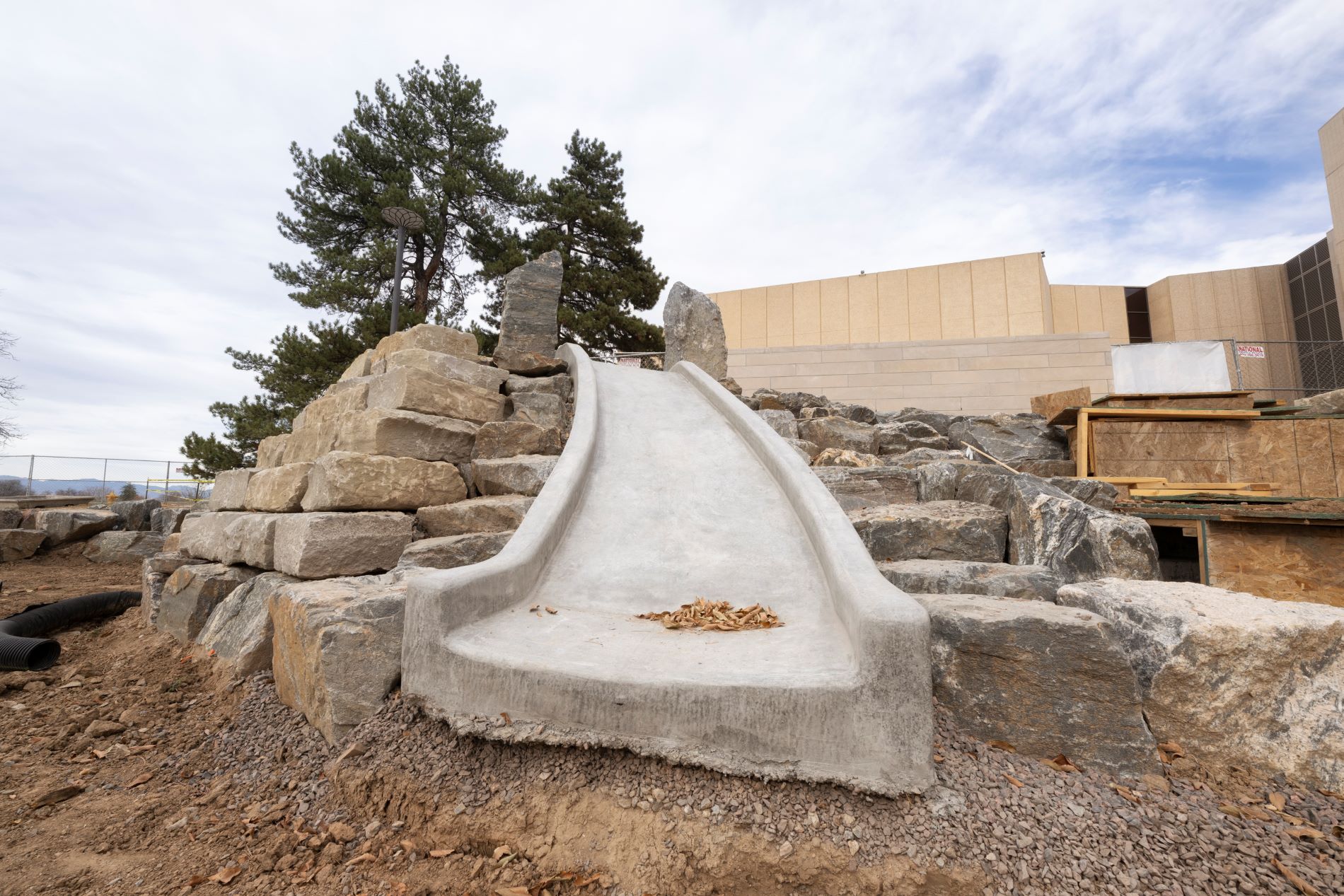
Construction of a slide that will be installed at the Nature Play experience. (Credit/Rick Wicker)
Inclusivity is a key aspect of the installation's design. All play stations, including the granite rock features and the highest point representing alpine lakes, are ADA accessible, ensuring that everyone can enjoy the park's offerings. Further, the project has bike racks that accommodate cargo e-bikes and connect directly to the city’s pedestrian and biking infrastructure.
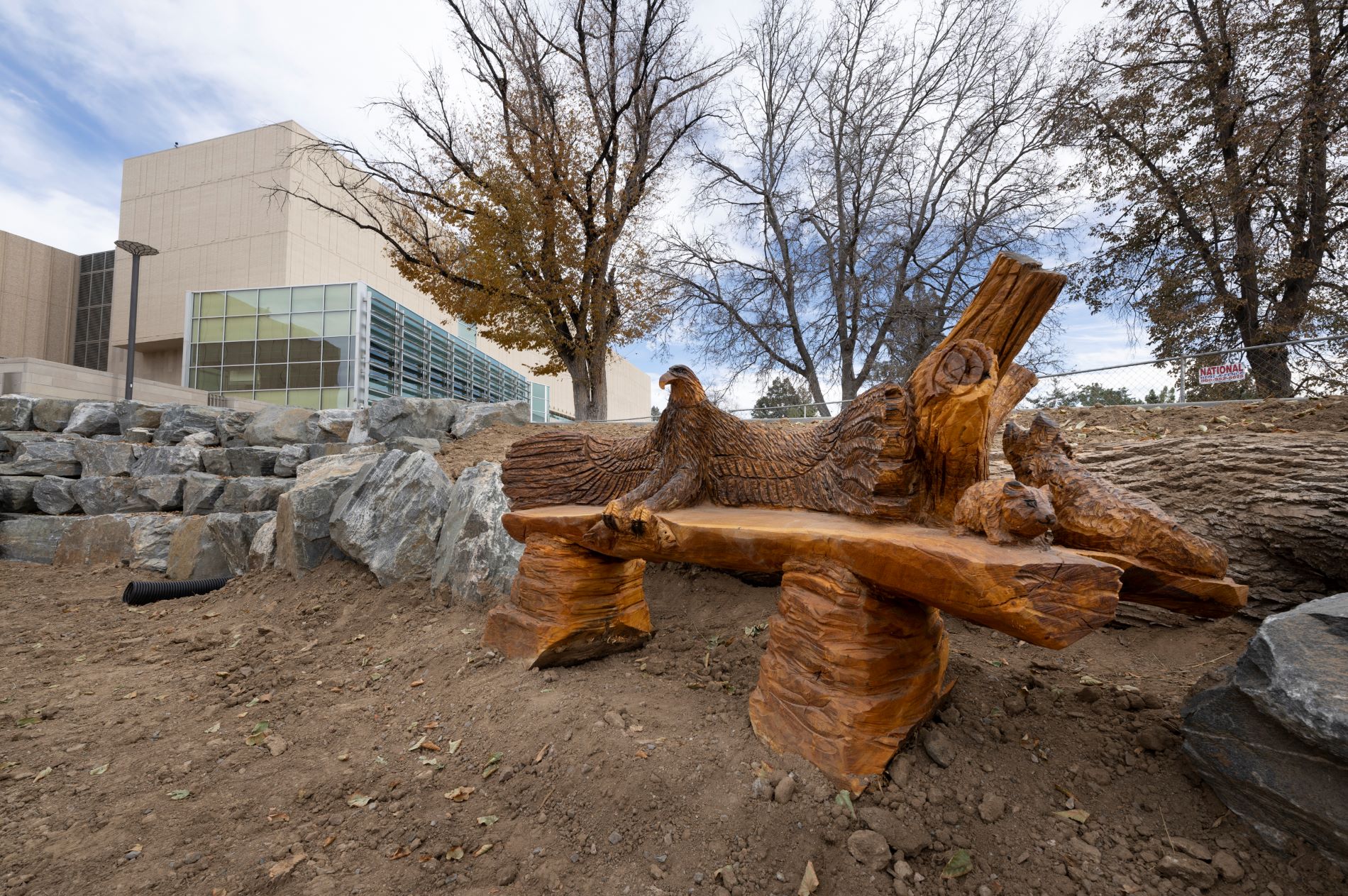
This wooden bench that has been carved to resemble an eagle will be placed along with other carved benches inside the Nature Play experience. (Credit/Rick Wicker)
Imagine walking into the park and experiencing the sights, sounds and senses of a mountain stream and flowing water in a box canyon. A box canyon with a mountain stream, originally designed by renowned landscape architect Saco DeBoer, offers a realistic and interactive natural feature, complete with a water that circulates water throughout the play installation. A beaver dam sculpture signals the start of a wetland waterway, further adding to the diverse ecological representations in the park.
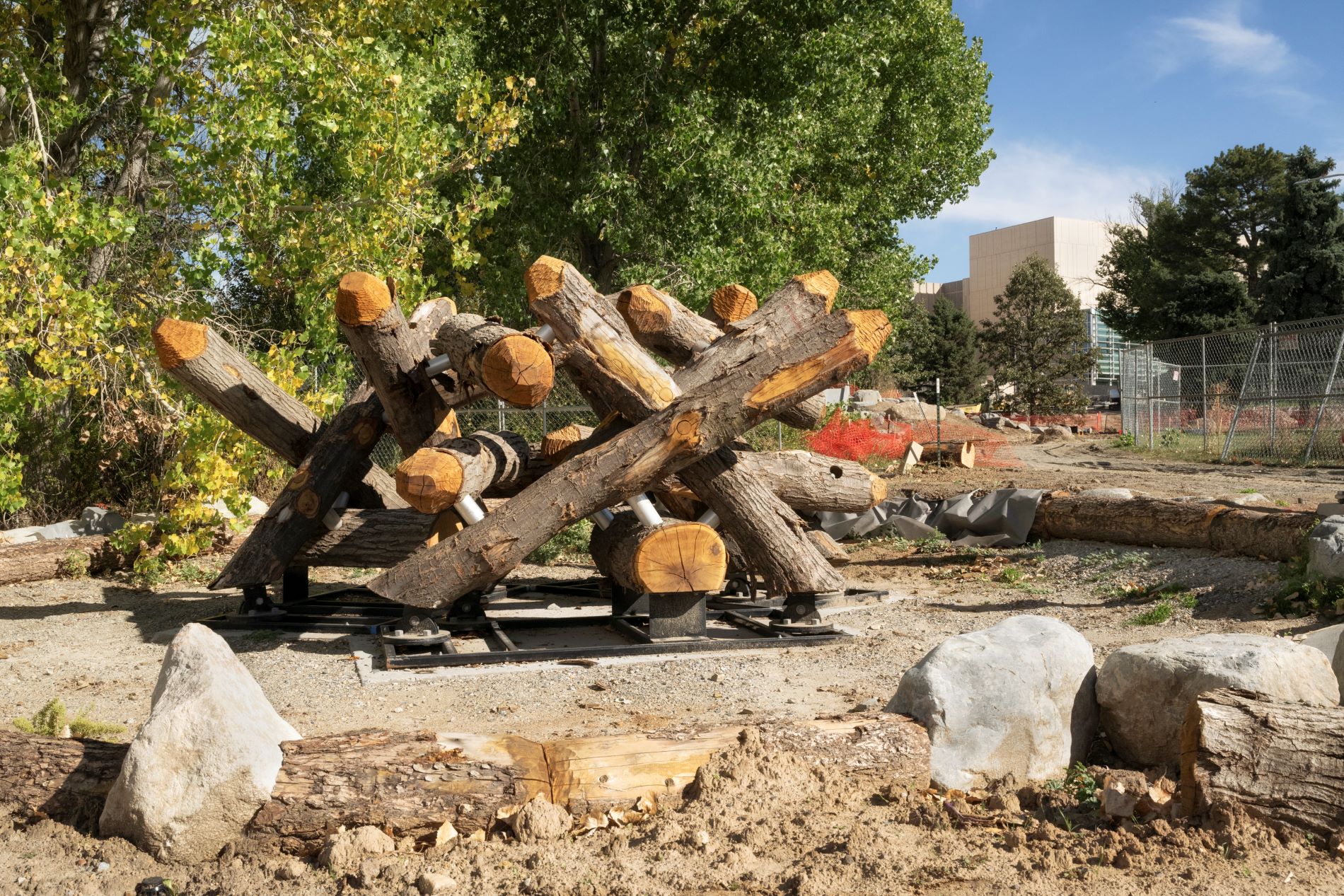
Climbable beaver dam located inside Nature Play (Photo/Rick Wicker)
Adding to the charm and educational value, the pathway features embedded footprints of Colorado animals, mirroring the creatures that inhabit the recreated environments. This whimsical touch not only makes the walkways more beautiful but also offers an interactive learning experience about the local wildlife, another example of the installation doing what the Museum does best — blending education, and playful moments into one unforgettable experience for the whole family to remember and enjoy!
Benches in the park will feature carvings of local wildlife like baby mountain goats and river otters, made from dead trees from City Parks. Along with the planting of new trees, the area showcases native plant-life found throughout Colorado.




After opening in September 2024, Nature Play is an innovative blend of natural beauty, interactive play areas, artistic installations and ecological education, all nestled in the heart of Denver's City Park.
Let us know what you’re most excited about!
This browser is no longer supported.
We have detected you are using a less secure browser - Internet Explorer.
Please download or use Google Chrome, Firefox or if using Windows 10, you may also use Microsoft's Edge browser.